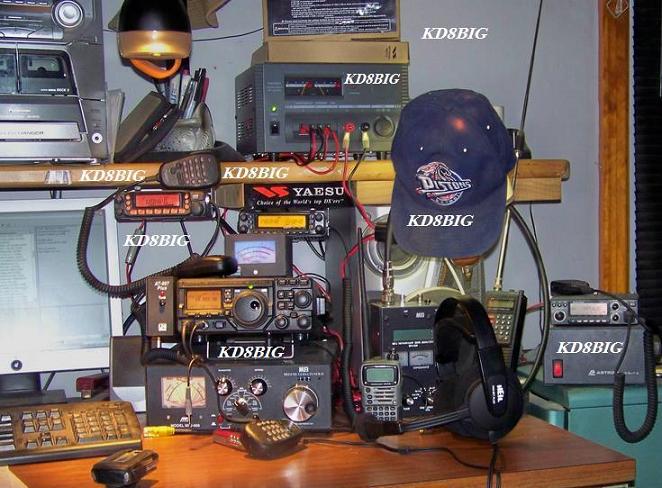After reading the following article I sat back for a moment to reflect on what I just read. An active amateur radio operator eventually makes friends via amateur radio from all around the world. For instance, I have a friend who lives in Japan, he is an amateur radio operator and we have spoken many times via different modes to include Echo-Link, WiRES II, Skype and FaceBook. Within a few hours of the earthquake I received notice from him that he was well, Praise the Lord. Yes, he and his family live in effected areas. What Amateur Radio Offers;
Now we have more options in hand other than analog. What is analog you ask?
* Amplitude Modulation (AM)
* Double Sideband Suppressed Carrier (DSB-SC)
* Independent Sideband (ISB)
* Single Sideband (SSB)
* Amplitude Modulation Equivalent (AME)
* Frequency Modulation (FM)
* Phase Modulation (PM)
* Continuous Wave (CW)
With the ever advancing technology we now have Voip and Digital Modes.
The most popular is Voice over Internet Protocol (Voice over IP, VoIP) is one of a family of internet technologies, communication protocols, and transmission technologies for delivery of voice communications and multimedia sessions over Internet Protocol (IP) networks, such as the Internet. Other terms frequently encountered and often used synonymously with VoIP are IP telephony, Internet telephony, voice over broadband (VoBB), broadband telephony, and broadband phone.
The 2 I use most other than Yahoo IM and Skype are WiRES II and Echo-Link
WIRES II (Wide-Coverage Internet Repeater Enhancement System) is a comprehensive and easy-to-use system for linking repeaters and/or home stations together, using Internet voice technology. Now you can talk to old friends, or make new ones, around the world. . .using your hand-held or mobile radio via a WIRES-equipped node to talk to other Hams across the country or across an ocean.
Echo-Link is a computer based Amateur Radio system that allows radio amateurs to communicate with one another using Voice over IP (VoIP) technology on the Internet for at least part of the path between them.
Most amateur digital modes are transmitted by inserting audio into the microphone input of a radio and using an analog scheme, such as amplitude modulation (AM), frequency modulation (FM), or single-sideband modulation (SSB).
* ALE Automatic Link Establishment
* AMateur Teleprinting Over Radio (AMTOR)
* D-Star
* Echolink (VoIP)
* Hellschreiber, also referred to as either Feld-Hell, or Hell
* Discrete multi-tone modulation modes such as Multi Tone 63 (MT63)
* Multiple Frequency-Shift Keying (MFSK) modes such as
o FSK441, JT6M, JT65, and
o Olivia MFSK
* Packet Radio (AX25)
* Automatic Packet Reporting System (APRS)
* PACTOR
* Phase Shift Keying
o 31 baud binary phase shift keying: PSK31
o 31 baud quadrature phase shift keying: QPSK31
o 63 baud binary phase shift keying: PSK63
o 63 baud quadrature phase shift keying: QPSK63
* Spread spectrum
* Simplex Teletype Over Radio (SITOR)
* Radio Teletype (RTTY)
* 8FSK 8ary Frequency Shift Keying
We also have other modes such as
Image Modes* Amateur Television, also known as Fast Scan television (ATV)
* Slow Scan Television (SSTV)
* Facsimile
These following 'modes' use no one specific modulation scheme but rather are classified by the activity of the communication.
* Earth-Moon-Earth (EME)
* Internet Radio Linking Project (IRLP)
* Low Transmitter Power (QRP)
* Satellite (OSCAR)
So after all that here is the article I was referring too. When Ham radio, social networks provided the connect For three hours after hearing about the tsunami in Japan, Delhi resident Dr A.P. Mishra tried to contact his daughter, Surabhi, a student of biology at the Hokkaido University. Unable to get through, he contacted Mr Sandeep Baruah, a Ham radio operator.
To Read more; Click Here








